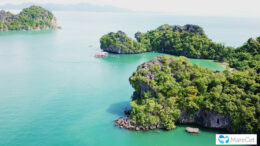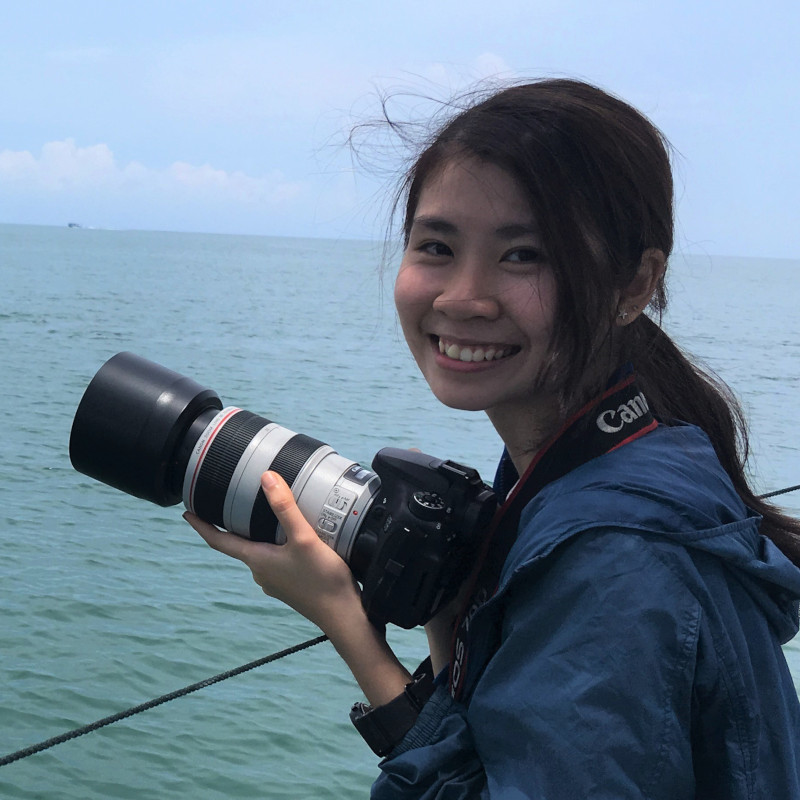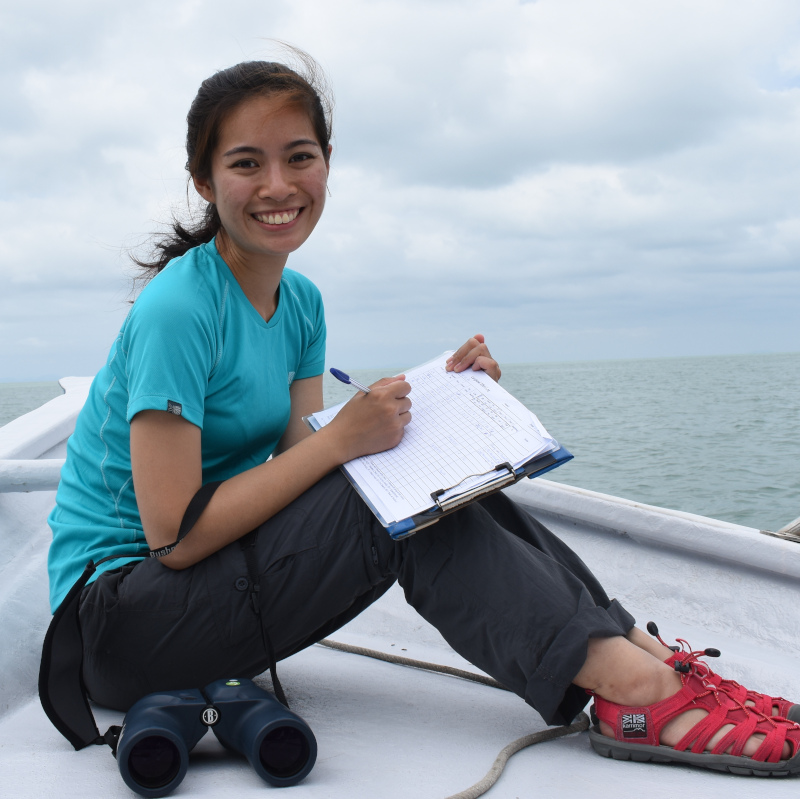The Place:
Langkawi Archipelago, Malaysia, a UNESCO Global Geopark
Why it matters:
 Langkawi is a place of geological significance, a cluster of 109 tropical islands sitting at the interface between the Straits of Malacca and the Andaman Sea. The archipelago’s natural history dates back more than 550 million years, making it the oldest part of Malaysia and the first landmass in Southeast Asia to have emerged from the seabed. The archipelago is celebrated for its ancient rock formations and geological structures, with plenty of minerals and fossils.
Langkawi is a place of geological significance, a cluster of 109 tropical islands sitting at the interface between the Straits of Malacca and the Andaman Sea. The archipelago’s natural history dates back more than 550 million years, making it the oldest part of Malaysia and the first landmass in Southeast Asia to have emerged from the seabed. The archipelago is celebrated for its ancient rock formations and geological structures, with plenty of minerals and fossils.
In appreciation of its geological heritage it was awarded the UNESCO Global Geopark status in 2007, the first place in the region to be accorded that status.
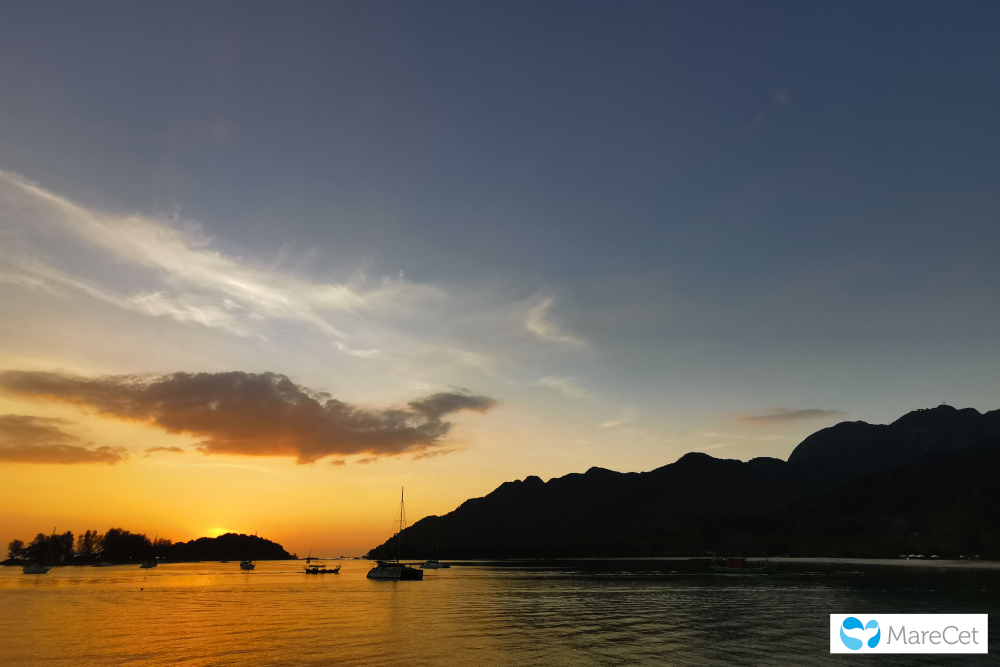
Langkawi consists of a wide range of productive habitats, from marine ecosystems, riverine landscapes and lowland forests to rainforest-covered mountains that are home to a plethora of wildlife. Some species are endemic to the area, including the bent-toed gecko (Cyrtodactylus langkawiensis) and Maxburetia gracilis, a type of palm. Ancient palm-like cliff cycads (Cycas clivicola) dating back 270 million years can also be found in Langkawi, making the area an evolutionary laboratory for some flora and fauna. Langkawi also has its famous flying five: the colugo (Galeopterus variegatus), the red giant flying squirrel (Petaurista petaurista), the flying paradise tree snake (Chrysopelea paradisi), the twin-spotted flying frog (Rhacophorus bipunctatus) and the flying dragon (Draco sp.).
Unknown to many, the coastal waters around Langkawi harbor at least five marine mammal species. It is one of the few places in the region that hosts relatively healthy populations of cetaceans. Some of the largest known group sizes of Indo-Pacific finless porpoises (Neophocaena phocaenoides) and Indo-Pacific humpback dolphins (Sousa chinensis) have been observed and recorded in the area. Moving farther offshore of Langkawi, you may be greeted (if you’re lucky) by species such as Bryde’s whales (Balaenoptera edeni), Indo-Pacific bottlenose dolphins (Tursiops aduncus) and spinner dolphins (Stenella longirostris). Closer to the mainland you may find elusive and endangered Irrawaddy dolphins (Orcaella brevirostris).
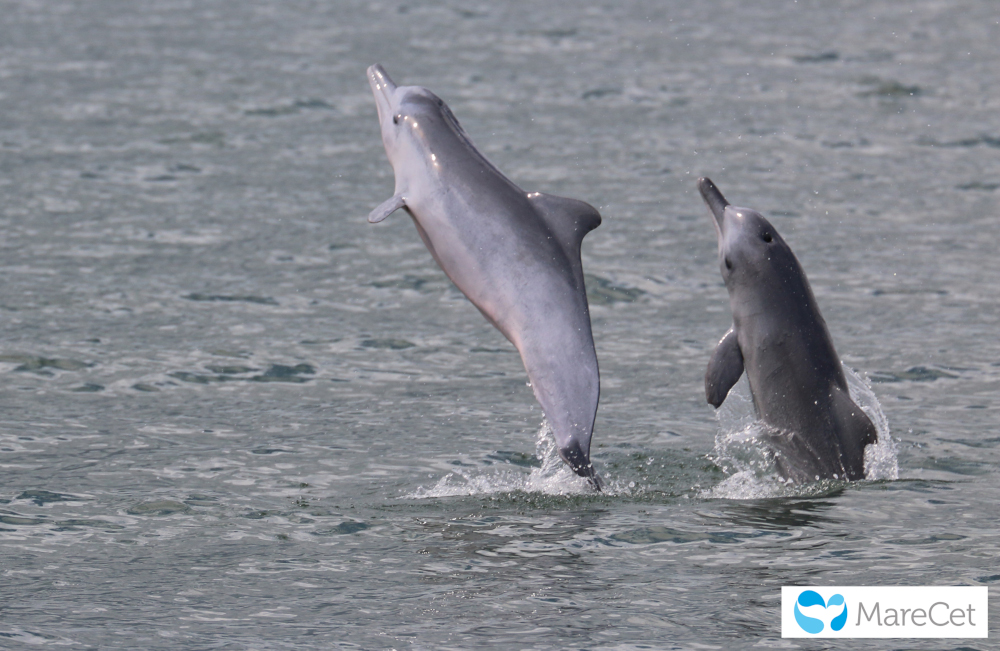
To top it all off, Langkawi is also a bastion of traditional Malay culture on this northwestern coast of peninsular Malaysia. The local legends and folklores, linked closely to old Malay culture, and traditional art forms provide a touch of color to Malaysia’s oldest corner. One such legend tells the story of Mahsuri, a young Malay woman falsely accused of adultery who, in the final moments of her public execution, cursed the island to be unable to prosper for seven generations. Many believe that her curse doomed Langkawi to a supposed late-to-bloom economic development. Other myths tell of fights and misunderstandings that led to the unique location names on the island.
Today locals practice paddy farming on the island while water buffaloes soak lazily in mud puddles among water hyacinth bloom, accompanied by cattle egrets. A drive off the tourist track reveals traditional wooden village houses, representing the local culture and Malay identity.
The threat:
As a tourist haven, Langkawi is constantly being developed. Over the past decade the island’s ever-changing landscape and coastlines have been rapidly transformed. Many coastal areas, mangrove forests and forests continue to suffer from land clearing and planned massive-scale land reclamation to make way for human activities. With more people settling here, more waste is generated, yet Langkawi lacks a proper and efficient waste management system and, in some areas, suffers from improper sewage management.
Unregulated tourism activities also pose a significant threat to Langkawi’s environment and wildlife: Increasing high-speed boat traffic from tour boats, ferries and jet skis erodes the banks of the mangrove forests and threatens marine wildlife with propeller strikes and noise pollution. Dolphins are sustaining severe wounds from interactions with marine debris and people; some have past traumatic injuries from propeller strikes.
My place in this place:
Chocolates. Duty-free shopping. Eagle feeding.
These are some of the most common words many would use when Langkawi is mentioned.
Conservation. Career growth. Friendships.
This is what comes to mind when we think of Langkawi. The island holds a special place in our hearts and has been a constant in our life-changing conservation journey.
Picture karstic formations dotting the landscape, with emerald waters so tempting that all you want to do is jump in — something we often did during our lunch breaks at sea while we were on survey for cetaceans. Our work in Langkawi often took us off the beaten path, and we were privy to parts of it that many people never get to see. Studying the dolphins here, it often feels like they’ve become our comrades, friends we see as we work. We have come to recognize many of these animals, calling them “the OGs” (short for the originals). We watch them grow and mature, some even becoming mothers, and watch their calves become adults. Our time with them fuels our passion and need to study and protect these animals.
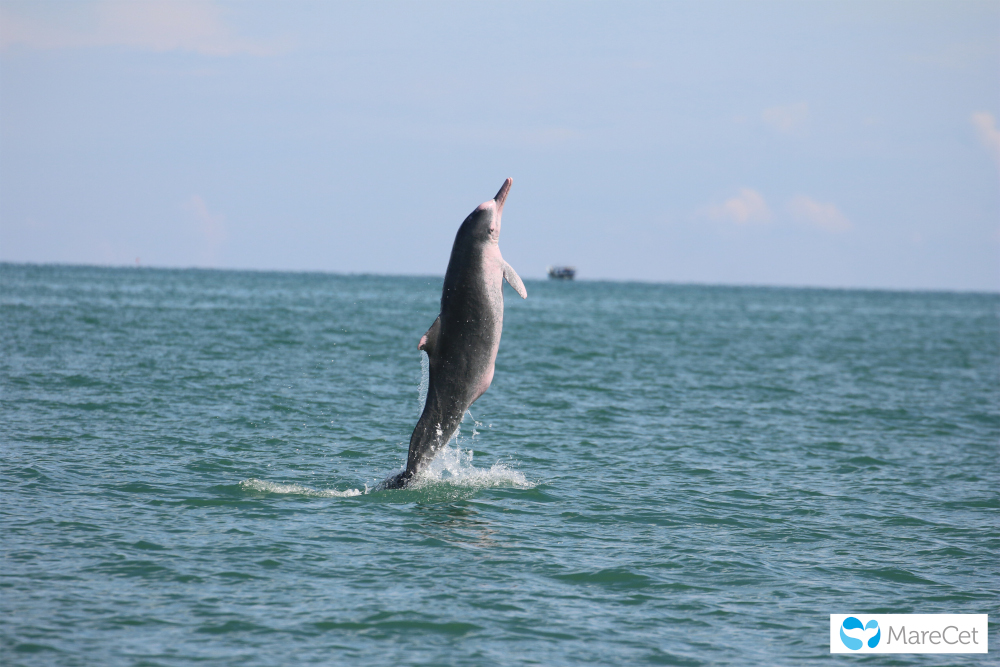
For us researchers there’s no shortage of truly unforgettable wild encounters. A near-death experience saw us cowering on the boat as we were caught in the middle of a feeding frenzy, with needlefish frantically leaping out of the water in attempts to escape the dolphins. The long, slender jaws of a needlefish can pierce skin and can even be deadly if you’re sitting in the wrong place at the wrong time. Thankfully, everyone made it out without a scrape.
Less dangerous encounters have included moments like our first Bryde’s whale sighting, just minutes after one of the team members had remarked that finding whales in these waters would be near impossible. But the emerging dorsal fin, attached to a body way too big to be a dolphin, had every one of us either screaming in awe or stunned into a silent shock.
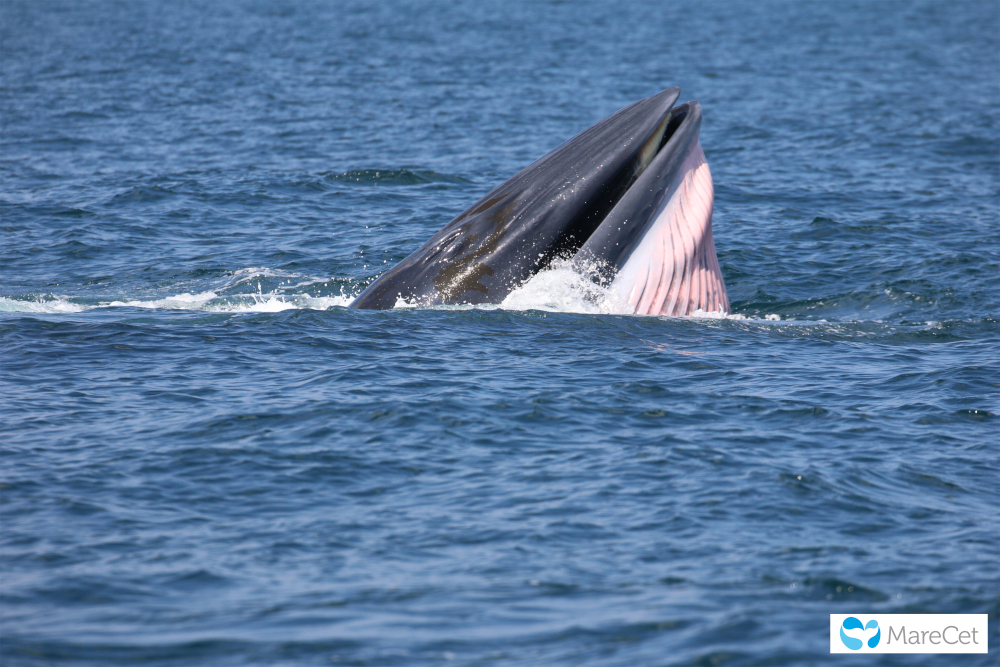
Having Langkawi as a setting for work is a great privilege — which is why, off the boat and on land, we strive to bring our experience to the locals, especially the youth. Our work has taken us to schools and public events, where we’ve showcased our research and conservation in the hopes of inspiring ocean stewardship.
Langkawi’s marine environment is a perfect living laboratory for nature learning. The variety of micro-habitats around the archipelago make it possible for many marine species to thrive. We’ve been able to take students out on boat trips to see the dolphins and check out intertidal shores; we’ve told them about the cliff cycads growing off the rocky limestone outcrops — plants that have existed for more than 270 million years. These experiences are rewarding and humbling.
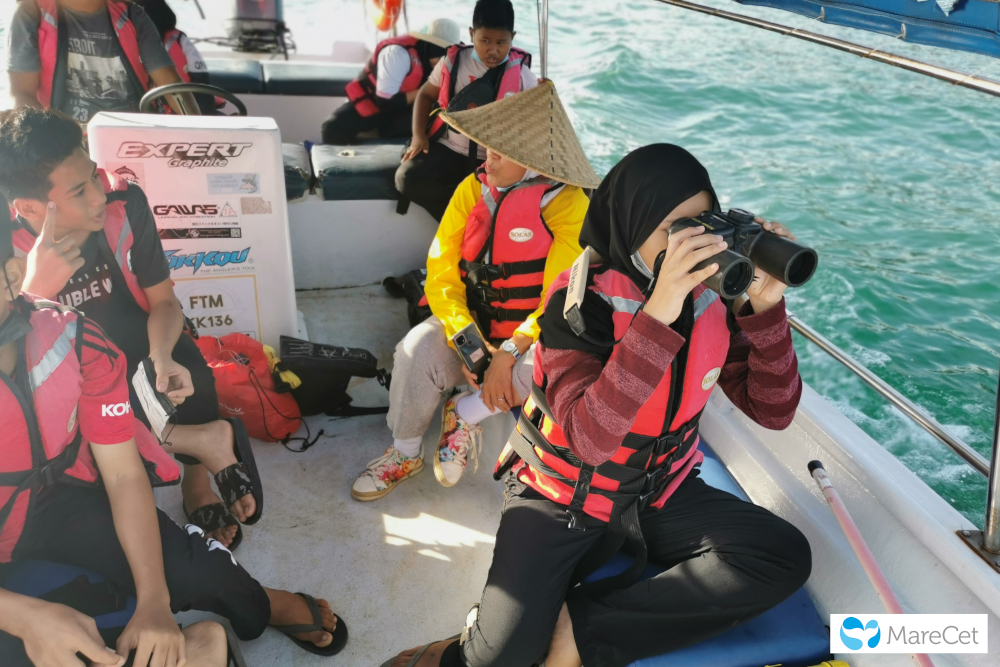
We’ve made friendships here and fostered camaraderie with the local community as well as the many volunteers and interns who have braved the sun, rain and waves on the boat with us. These friendships have been an unforeseen pleasure, making our long, strenuous days out in Langkawi’s waters more enjoyable.
Who’s protecting it now:
There is presently no law in place protecting Langkawi’s coastal areas and waters. However, efforts to lobby for marine environmental protection and preservation are underway. MareCet, a Malaysian NGO devoted to marine mammal conservation, has shared and contributed research findings and knowledge about marine mammals to several coastal development plans in Langkawi and across to the adjacent mainland coast. Other actions taken by MareCet include submitting open letters against massive reclamation projects in Langkawi and successfully nominating and acquiring international recognition of Langkawi’s waters as an IUCN Important Marine Mammal Area since 2019. Local NGO groups such as Trash Hero Langkawi also expend significant efforts in conducting cleanups around the island. The Department of Fisheries Malaysia manage the adjacent offshore Payar Island Marine Park and have ongoing efforts in restoring the coral reefs in the area.
What this place needs:
Langkawi requires more high-quality ecotourism and a better marketing strategy to promote and heighten the value of its natural environment and biodiversity. The mass tourism direction it’s been moving in over the past decade — despite the official tourism tagline that reads, “Naturally Langkawi” — is a problem. To that end, more capacity building for better-quality nature tourism activities should be provided to local tour operators, and local youth should be encouraged to participate.
In environmentally sensitive areas, tourism activities should be regulated with stricter enforcement. MareCet has planned efforts with local stakeholders to lobby for vessel speed-limit zones in some critical marine areas in Langkawi to safeguard the well-being of cetaceans and other marine wildlife. Langkawi also needs stricter laws, limits, restrictions and careful planning for developments on the island, especially those that involve land clearing and reclamation (sea filling). Protection should also be warranted for ecologically important areas.
Sewage and waste-management systems should be improved on the island, and efforts must be made toward Langkawi being a destination that reduces its consumption of single-use plastics. Scientific research on its biodiversity and ecosystems should be enhanced and continued in the long term to aid with conservation monitoring efforts that can inform management practices.
Lessons from the fight:
Island ecosystems are very hard to replace; they’re less widespread than mainland ecosystems, and endemism is often high. An island is a lot more frail, vulnerable and sensitive to disturbance. From MareCet’s experience, scientific research applied to conservation action and management is imperative to achieve more balanced development between geoheritage and nature conservation and local socioeconomic development.
As important as scientific research, conservation is more than protecting species or places; it involves human behavioral change. It’s vital to engage with the local community and stakeholders for promoting awareness and expanding the space for conservation dialogue across various stakeholders, essentially achieving socially relevant, economically productive, and environmentally sustainable outcomes in the area.
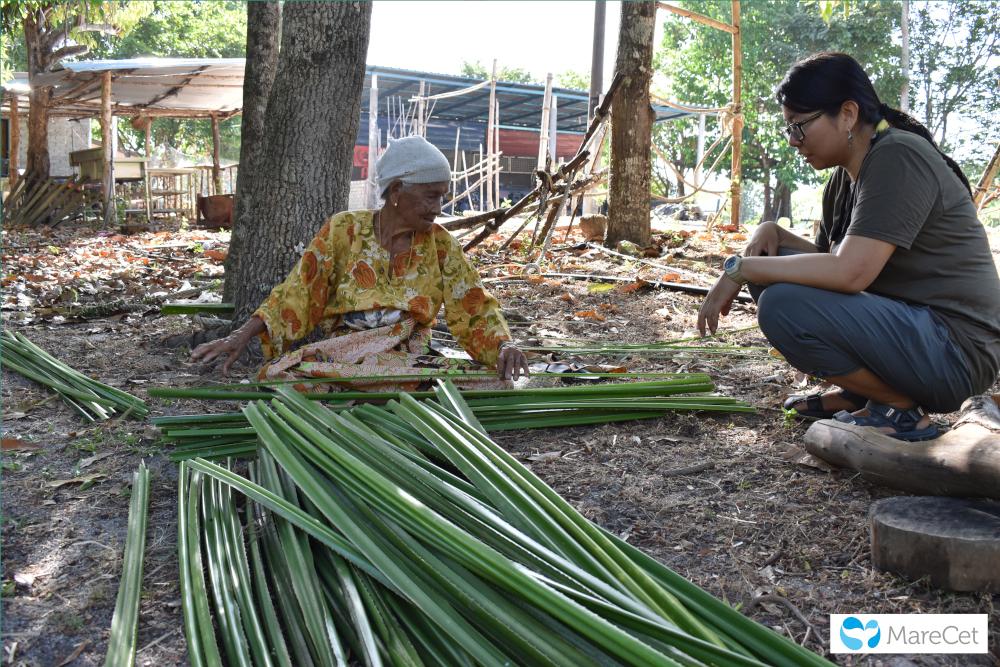
It’s equally important to integrate conservation education in schools to raise awareness and empower the local youth to be stewards of their island home. Innovative approaches to raising awareness are also an advantage in terms of outreach success — for example, field trips and thought-provoking games.
Follow the fight:
You can learn more about what we do and our updates in Langkawi through our blog, newsletter and social platforms on Facebook and Twitter.
If you are keen to know more about Langkawi Archipelago, here are some publications:
-
- Leman, M. S., KOMOO, I., MOHAMED, K. R., ALI, C. A., & UNJAH, T. (2007). Geopark as an answer to geoheritage conservation in Malaysia – The Langkawi Geopark case study. Bulletin of the Geological Society of Malaysia, 53(February 2016), 95–102. https://doi.org/10.7186/bgsm53200715
- Samat, N., & Harun, N. (2013). Urban Development Pressure: Challenges in Ensuring Sustainable Tourism Development in Langkawi Island. Procedia – Social and Behavioral Sciences, 91, 385–394. https://doi.org/10.1016/j.sbspro.2013.08.435
- Dolphin-friendly designation – Promoting transboundary protection of rare marine mammals
- The Langkawi Dolphin Research Project: A decade of discoveries, tribulations and triumphs
Previously in The Revelator:
Protect This Place: Tallahassee’s Towering English Forest Faces Imminent Destruction
![]()

